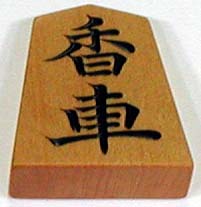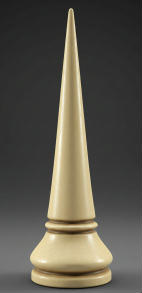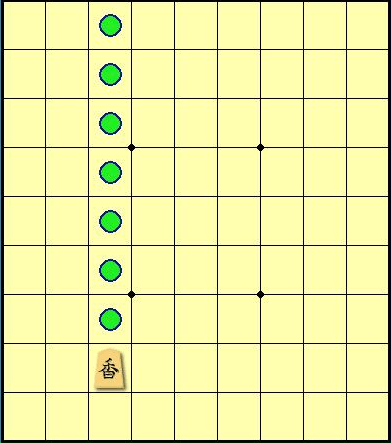Piececlopedia: Lance
Historical notes


The Lance, or Kyoosha, or Kyoo is a piece from Shogi, Japanese Chess. It also appears in some variants of Shogi. Its Japanese name of 香車 is transliterated as kyōsha and means incense chariot. Since it starts in the corners of the board in Shogi like the Chariot does in Chaturanga or Xiangqi, and it moves like the Chariot but in only one direction, it is probably based on the Chariot. The English name of Lance is not a translation but probably comes from it charging forward in one direction.
Movement
The Lance can only move one or more squares straight forward, without jumping, i.e., it can move like a Rook, but only in the forwards direction. In the diagram below, the lance can move to all the squares marked with a green circle.

Graphics
These feature both Kanji characters. The top one, 香, means incense, and the bottom one, 車, means chariot:




These feature just the Kanji character for incense, in what is known as abbreviated Kanji:





These feature an arrow, which represents the one-way direction of the piece:



These feature a movement diagram.


Originally written by Hans Bodlaender.
Some new text and graphics added by Fergus Duniho, who is personally responsible for the Motif, Symbolic, Japanese Shogi, Japanese Shogi Wood, Diagrammatic, and AI graphics, as well as the new movement diagram. The Koma pieces were made by Koma-Shokunin 1, and they are used here under a Creative Commons Attribution-NonCommercial license. The Alfaerie image is by David Howe.
WWW page created: Aug 17, 2000. Last modified on: April 10, 2025.